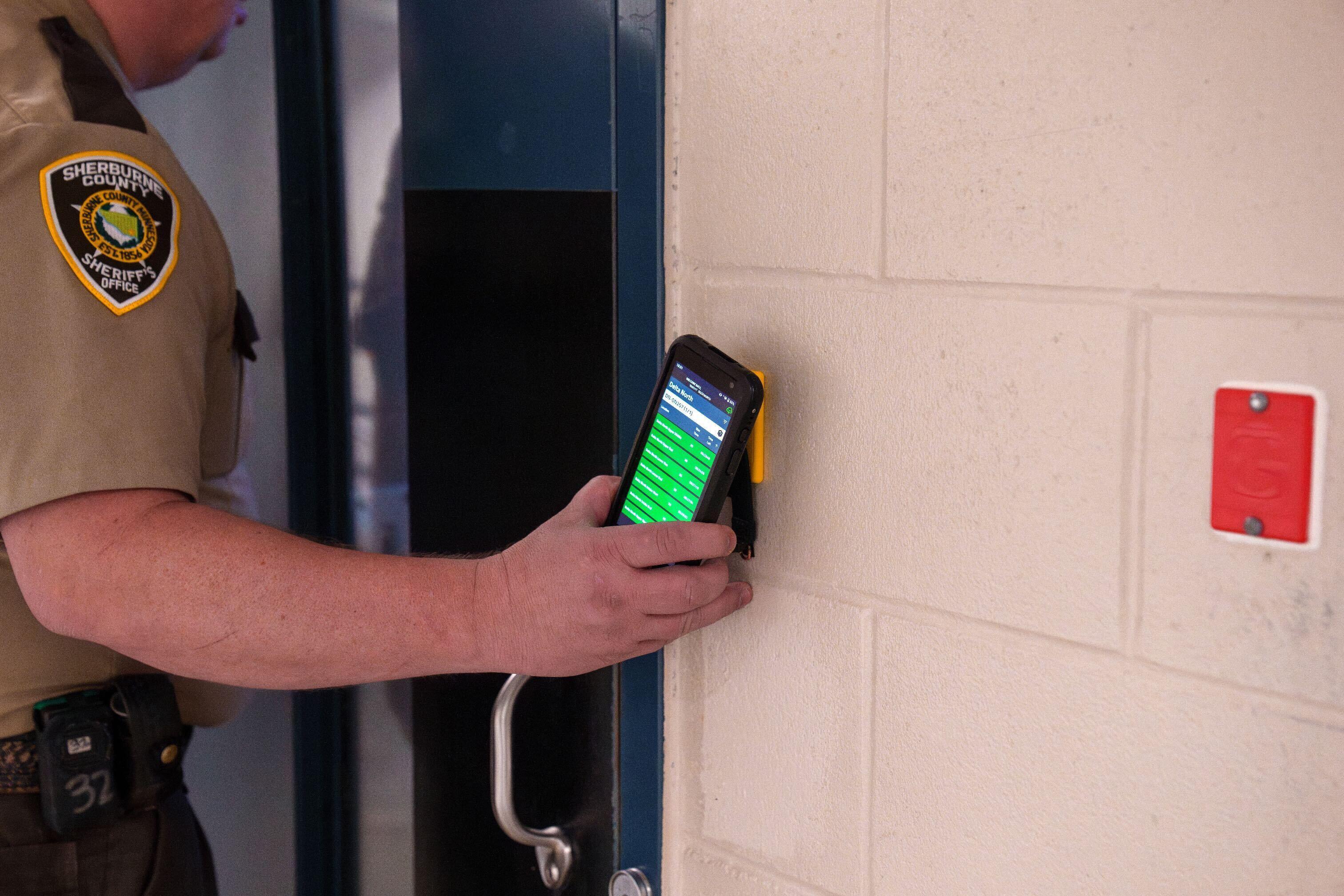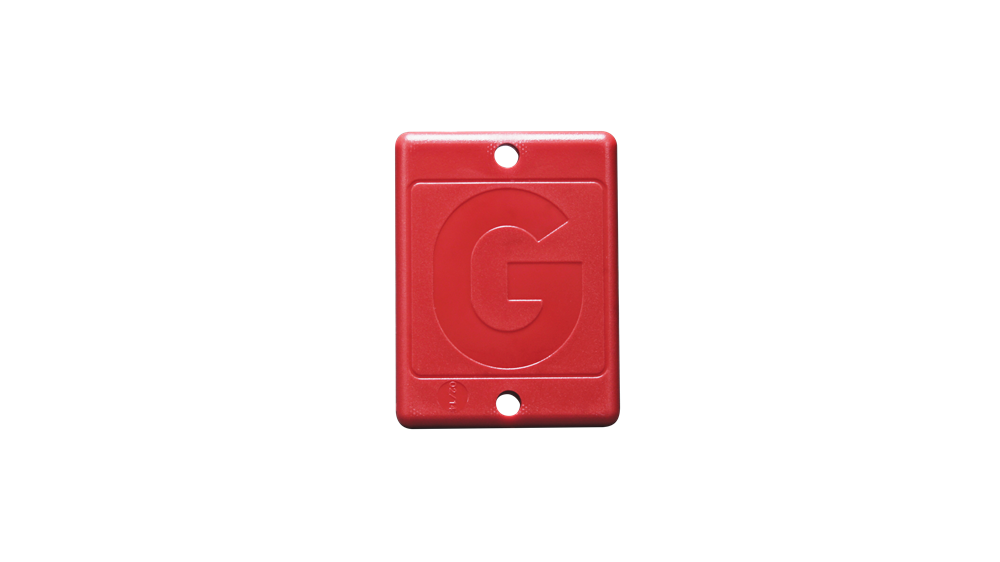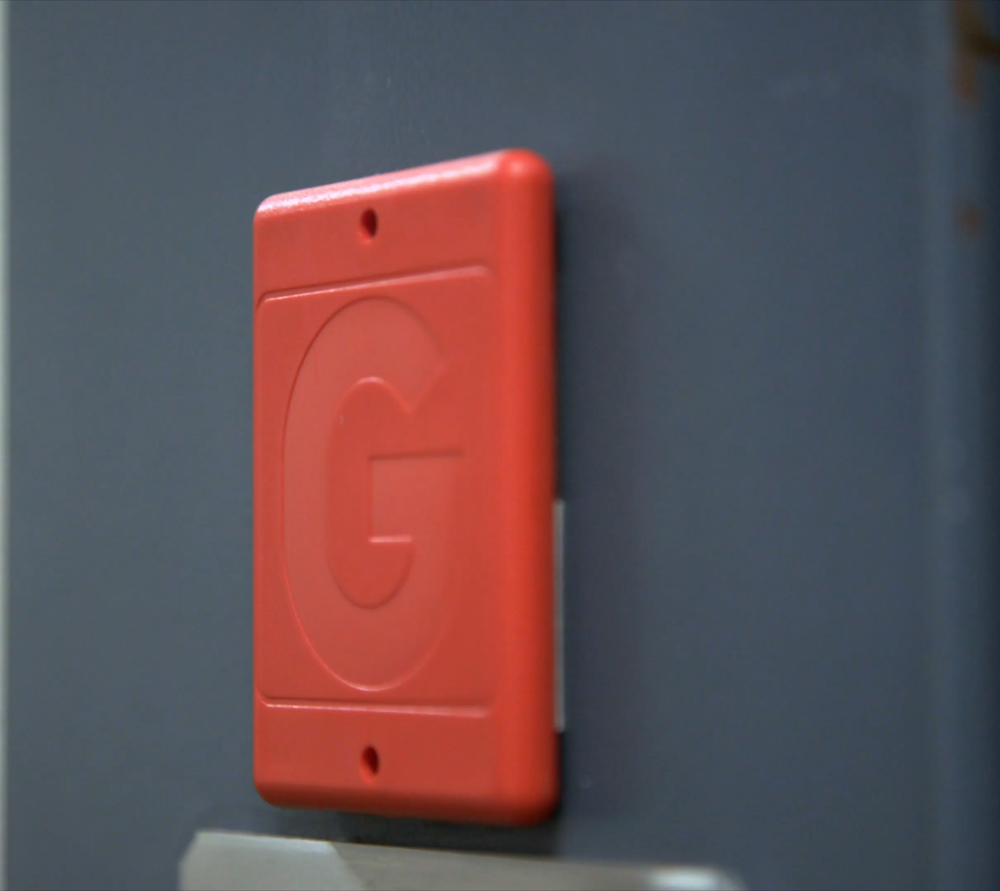Hard Tags, the first wall-mounted auto-identification for corrections, are shatter-proof, tamper-proof, enclosed RFID tags designed to survive the harshest conditions in any correctional environment.
But Hard Tags weren’t always this way.
Truth be told, the original Hard Tag wasn’t hard. And it wasn’t durable, either. They were bright red plastic nameplates with no engraving—just an RFID tag taped to the backside of the nameplate. Then, the nameplate was taped to a wall, making sure it was outside of an inmate’s reach. No security screws or epoxy. Just good old-fashioned duct tape. These were the original wall-mounted tags we taped inside jails while GUARDIAN RFID beta-tested our software in 2004.
Today, Hard Tags are decidedly different than the beta version. As different as they may appear, they still serve their core objective. In this blog, we’re going to cover these questions:
- How durable are Hard Tags?
- How is a Hard Tag manufactured?
- How should I mount a Hard Tag?
- Is a Hard Tag weatherproof?
- Are Hard Tags covered under warranty?
How Strong is a Hard Tag, Internally and Externally?
Hard Tags are sometimes referred to as “pucks” in facilities as they are small but mighty pieces of plastic. They are *quite literally* bullet-proof sensors that each contain an RFID tag that’s compatible with NFC, ISO 14443 Type A and B; FeliCa, Mifare, and ISO 15693 (in geeky parlance).
In more straightforward terms, the SPARTAN is compatible with reading the RFID tag encased in each Hard Tag. This allows Mobile Command XR to identify a location as well as which inmates are assigned to that location, and more. Each Hard Tag is encrypted and cannot be modified for security purposes. There is no power supply necessary, and no batteries to replace.
Aside from being impossible to electronically manipulate, Hard Tags are also waterproof and designed to survive external temperatures and conditions. We’ll talk about this in more detail later.
How is a Hard Tag Manufactured?
Every Hard Tag is comprised of two plastic plates made of Acrylonitrile butadiene styrene (ABS). ABS is considered a shatterproof plastic due to its excellent impact resistance, meaning it can withstand significant force without breaking into sharp pieces, making it a good choice for applications where durability and safety are important.
The plates are ultrasonic welded together to ensure that the plates cannot be pried apart.
During one product training session in 2007, a deputy at the Buffalo Co. Sheriff’s Office in Kearney, Nebraska, asked: “What would happen if I shoot one of these tags in my backyard?”
So we gave him one. A few hours later, he came back, handing us the Hard Tag he shot from a range of approximately 30 yards with a 9mm

While shooting a Hard Tag isn’t the top concern for jails and prisons, their durability is. Like all corrections professionals, you learn to say nothing is “inmate-proof.” You just try your damnedest to make it really, really hard.
One of the very first GUARDIAN RFID wall-mounted RFID tags is still in use today at the Worth Co. Jail in Northwood, Iowa after nearly 20 years. There are perhaps less than seven original “beta” tags still in operation today.
Why are Hard Tags Red?
One of the main reasons Hard Tags were originally red – and are still the predominant color of choice, is because we wanted them to be visibly noticeable. There was never any intent to make them inconspicuous or to camouflage them into their surroundings.
We wanted officers to know where they were at all times – and we wanted inmates to know, too. Why? When something is bright red – you can spot it from a mile away. So, in the unlikely event one were to ever go missing, you’d know it almost immediately.
But red isn’t the only color of Hard Tag.
Other Colors Supported
To make things easier, GUARDIAN RFID offers a variety of colors for Hard Tags, allowing facilities to color-code their tags based on their specific purposes. For example, run tags or movement tags could be yellow, while pod tags and cell tags might be red—and vice versa. The flexibility and versatility of these tags enable facilities to tailor them to their unique needs and preferences.
How are Hard Tags Mounted?
Mounting a Hard Tag is fast and easy. Here are the steps for installing a Hard Tag by a cell door, for example:
- Determine the cell where you will need a Hard Tag placed.
- Locate an area to the side of the cell that is roughly shoulder height (the average height for a Hard Tag is 54” to 60”).
- Locate an area next to the door that is roughly arms-length away from the cell window. This is so an officer can scan the tag at the same time they are looking into the window and making their observation.
- Note the surface texture of the determined location. Is it metal? Is it brick? Luckily, Hard Tags can be installed on both surfaces.
- NOTE: If the surface is metal, you will need to mount a spacer tag (which costs roughly $15) between the wall and the tag you will scan. Metal can significantly shorten the RFID readability; a spacer helps elevate the tag off steel surfaces to optimize tag efficacy.
- Determine the materials you will use to mount the Hard Tag. Hard Tags are generally mounted using two tamper-proof screws. However, there are other methods for installing:
- 3M double-sided foam tape (the Crow Wing County Jail in Minnesota uses this method).
- Epoxy (the Potter County Jail in Texas, uses this method).
If installing Hard Tags near each other, be sure leave at least 3 to 5 inches of space between them. To learn more about the recommended installation, this blog provides best practices on where to place your Hard Tags.
Are Hard Tags Weatherproof? Where Would I Use Them Outside?
Yes, Hard Tags are designed to survive extreme heat and cold. The can operate from -40 degrees Fahrenheit to 185 degrees Fahrenheit.
While not many facilities use Hard Tags outdoors, some do for their outdoor recreation and perimeter checks. The facilities that have used Hard Tags outdoors since 2005 have done so without any disruption.
Are Hard Tags Covered Under Warranty?
Hard Tags have a lifetime guarantee. If one were to go bad, we’re happy to replace it at any time. This warranty coverage is provided by your System Renewal Fee (SRF).
In general, either our implementation team or our Academy Team will generally leave a few spares behind, not because Hard Tags go bad, but because it’s easier to have some extras in your possession in case you have a few additional locations you want to include a Hard Tag.

Hard Tags have come a long way since their humble beginning. Today, they are the industry standard for durable, tamper-proof, enclosed RFID tags. Engineered to withstand extreme conditions inside and outside of jail walls, Hard Tags deliver unmatched longevity, effortless installation, and color-coded versatility.
To learn more about how GUARDIAN RFID Hard Tags can revolutionize data capturing for your agency, contact our team to explore if Hard Tags are a fit for your facility.




